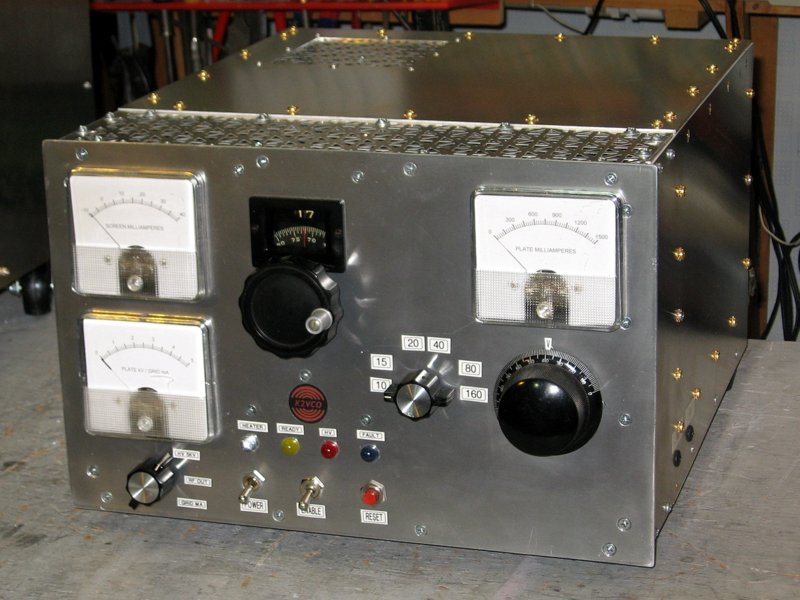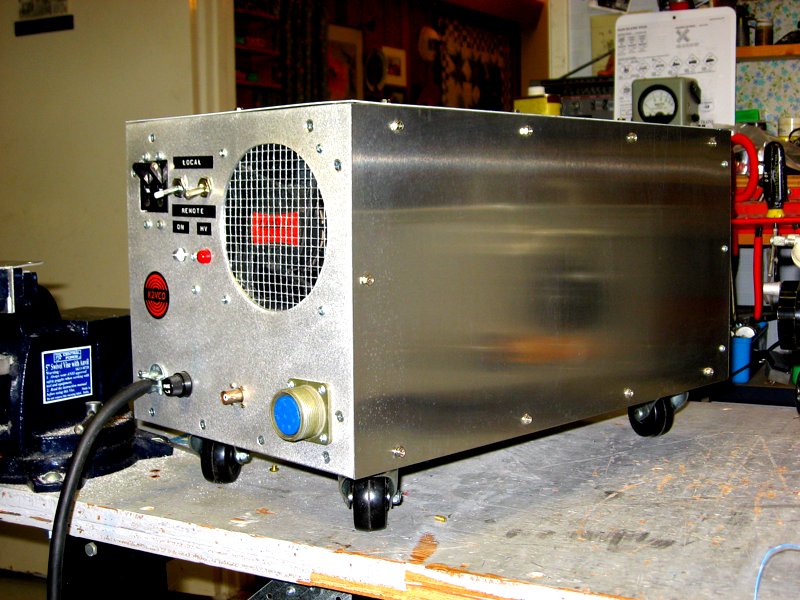
I don't pretend to be an expert metalworker, and everything is done with hand tools except for a handheld jigsaw and a drill press.
Nice tank coil, isn't it? Too bad it didn't work! This layout made the bandswitch leads so long that it wasn't possible to get a low enough inductance on 10 meters. The new tank appears in a photo below.
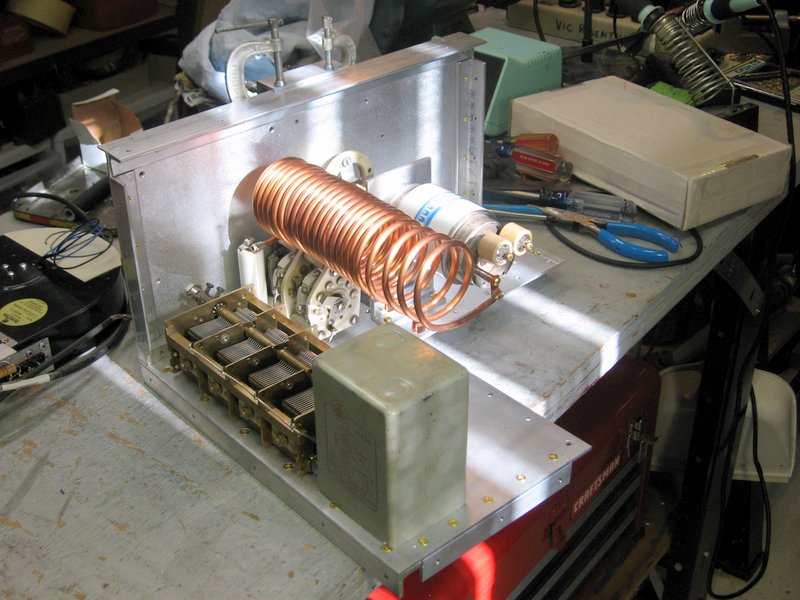
The blower is a bit more capable than needed, but you can't have too much air! I only hope it will not be too noisy.
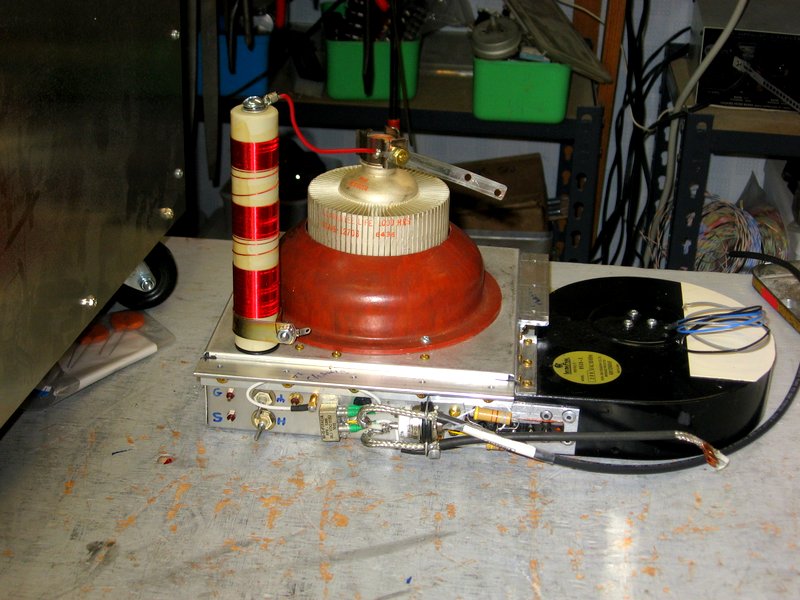
There are two small coils to the left of the socket: the lower one is the inductor in the pi-section lowpass filter, and the upper one is an RF choke wound on a resistor that is in series with the screen. The socket has a built-in bypass of 1500 pf. The large discs connected to the screen terminals are not capacitors -- they are MOVs to protect the driver in the event of flashovers.
I found that a bypass capacitor of 0.01 uf on the cold side of the swamping resistor and a similar capacitor in series with the input were not sufficient to provide a low enough impedance on 160 meters. In order to get a 1:1 SWR to the transceiver, I added 0.1 uf capacitors in parallel. Just to be sure, I did the same with the screen bypass.
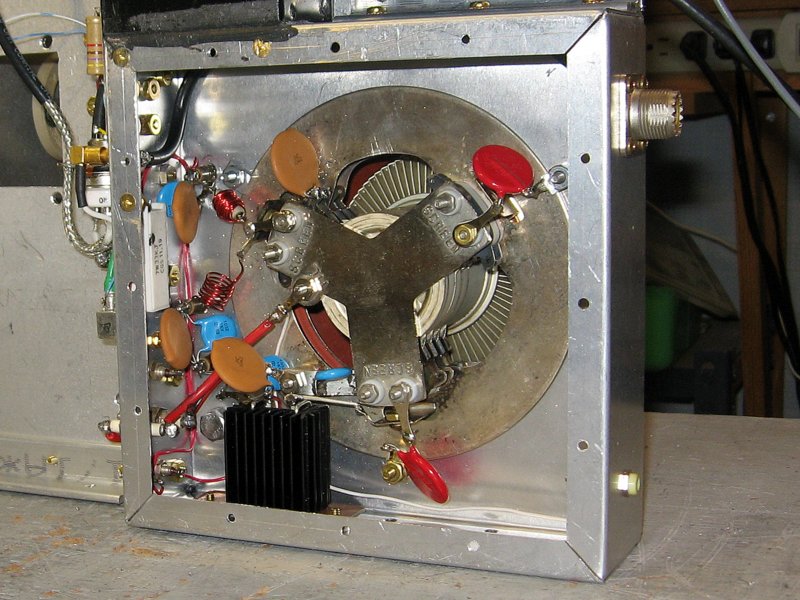
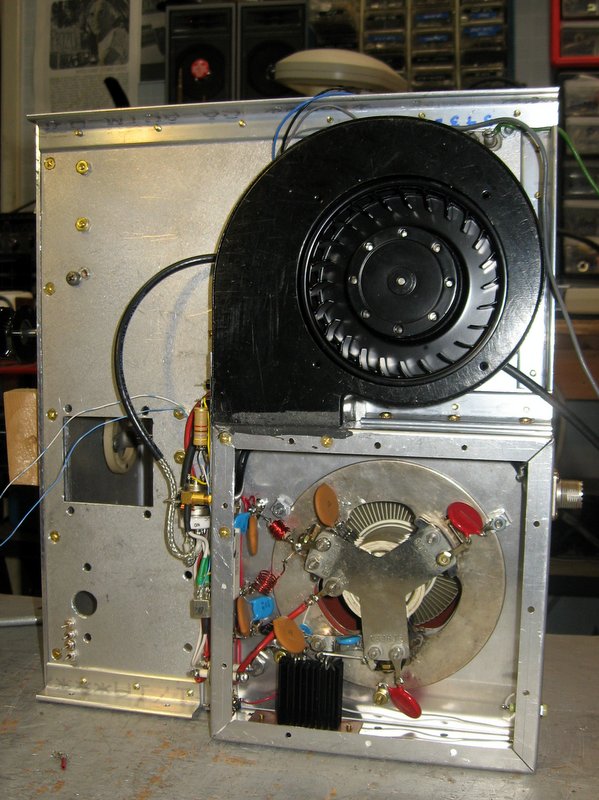

Note: it is important to calculate the impedance using the load line, because the usual approximation -- RL= (Ea/Ia)/k where k = 1.5 to 1.7 for class AB -- is very far off (at least it was in my case).
I measured the inductance of my Ameritron RF choke (225 uh) and various stray capacitances to enter into the spreadsheet, using the AADE meter. This is important for accurate results.
Then I connected a 1815 ohm resistor from the tube plate to ground (all of this with power not connected, of course). I connected an antenna analyzer to the amplifier output. It will show a 1:1 SWR when 50 ohms is transformed to 1815 ohms.
For each band, I set the tuning capacitor to the appropriate value given in the spreadsheet, and located the point on the coil that gave minimum SWR. Iteratively adjusting the loading and tuning capacitors brought it to 1:1. When the point of 1:1 SWR coincided with the calculated value of capacitance, I fixed the tap in place.
This was easier to do than to explain. The hard part was working in such close quarters with the coils and the switch!
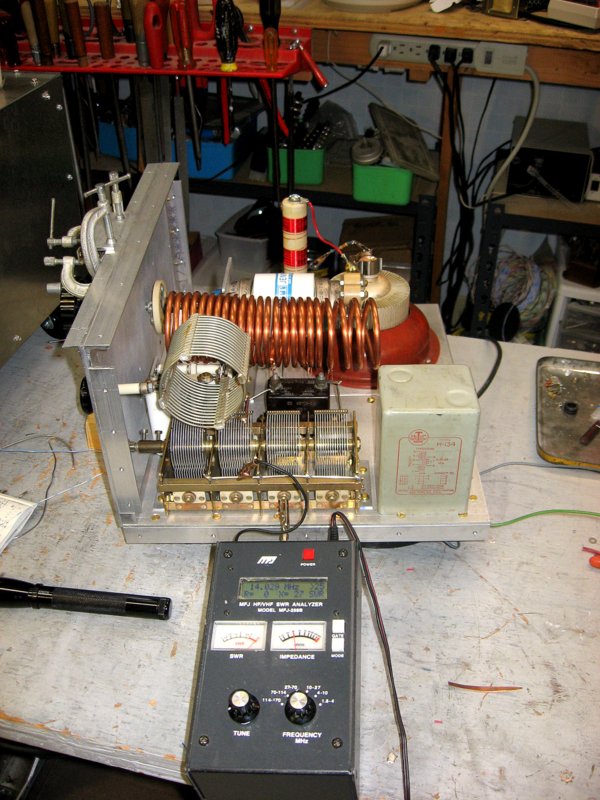
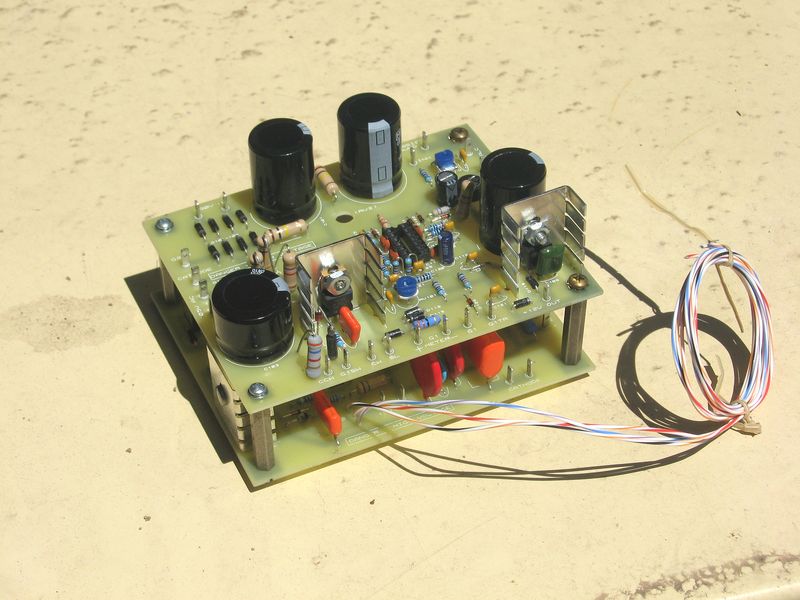
Instead of trying to use 3/16" tubing for the 80 through 10 meter portions, I used it only for 20 through 10. The Airdux coil is used for 160, 80 and 40 meters. It is no. 12 wire, which might be a bit small on 40. I decided to try it and see.
Yes, the coil is made of two chunks of Airdux spliced together. After I see how it works on 40, I'll think about replacing it (but read Robert M. Pirsig's "Zen and the Art of Motorcycle Maintenance" to see why this is OK).
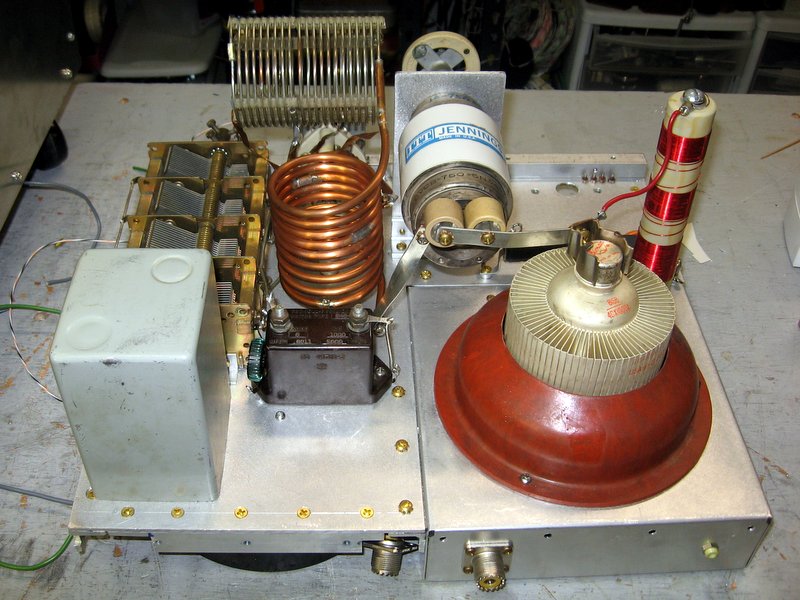
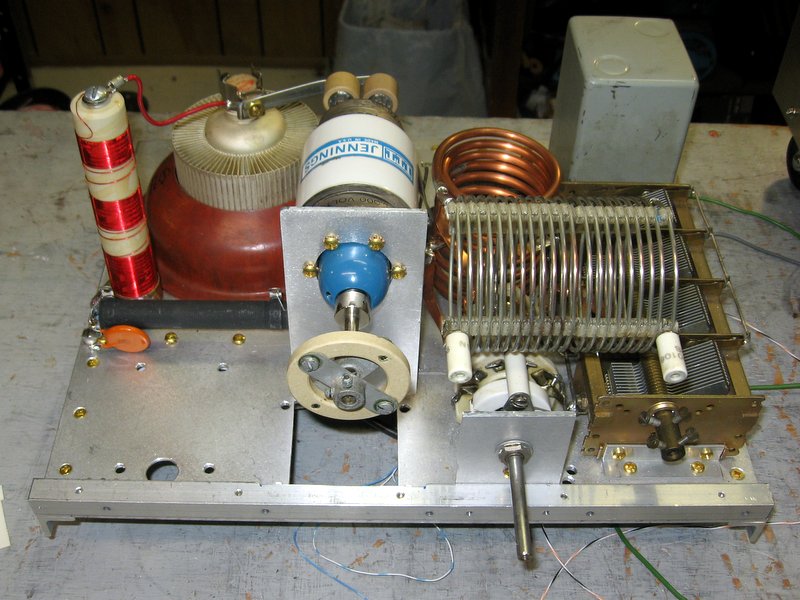
The choke is wound with no. 18 wire on a ferrite core. Theoretically it will have a high enough impecance on 160-10 meters so that it won't burn out. We'll find out!
Incidentally, I used the mica padding capacitor instead of the usual ceramic doorknob because it is able to pass a large current without heating up and changing value, as sometimes happens with the doorknobs.
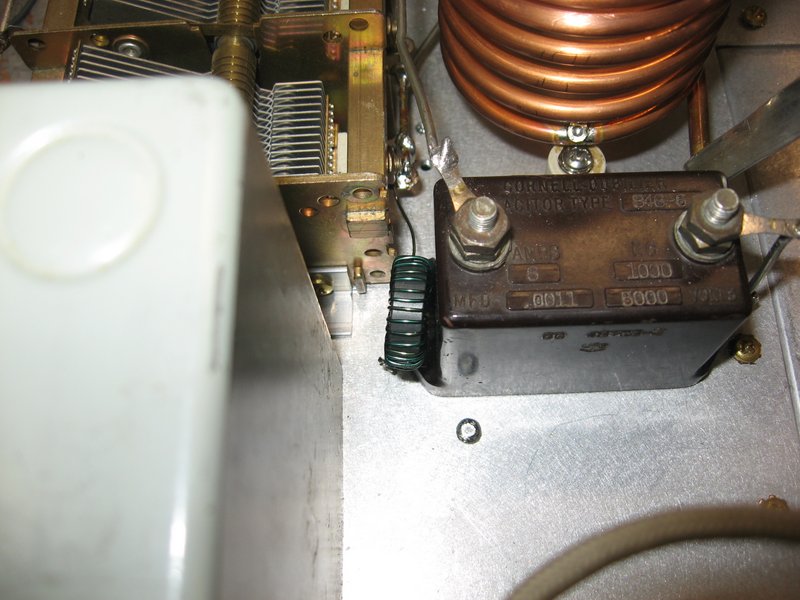
The top, bottom, and sides are 1/16" aluminum.
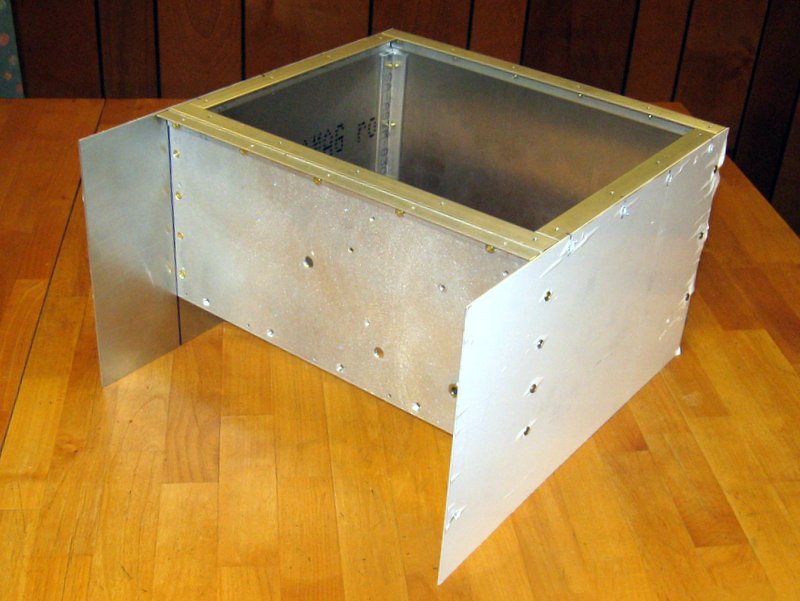
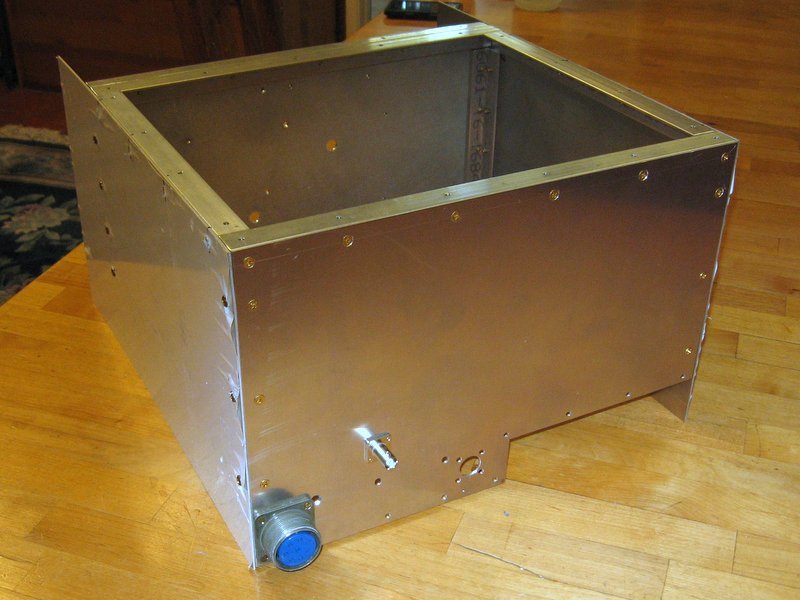
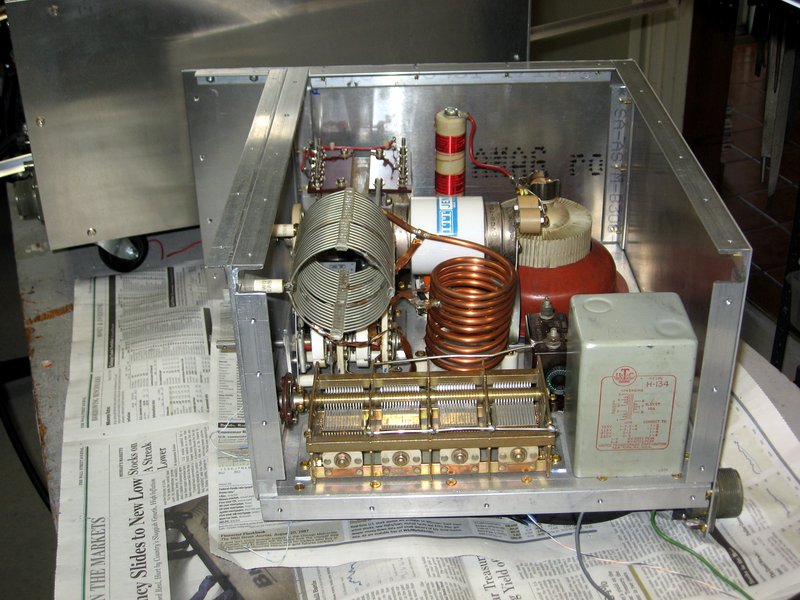
I'm a bit worried about the transformers so close to the tank coils. Now I'm thinking the layout should be entirely different, with the transformers on one side, and shielded from the RF components! We'll see if this becomes a problem.

Meter holes were made with a jigsaw. I drilled four 3/8" holes for each meter and connected them up, then cleaned up with a file. I have never found a better way to do this job -- my drill press is much too fast on its slowest speed to use a hole saw properly.
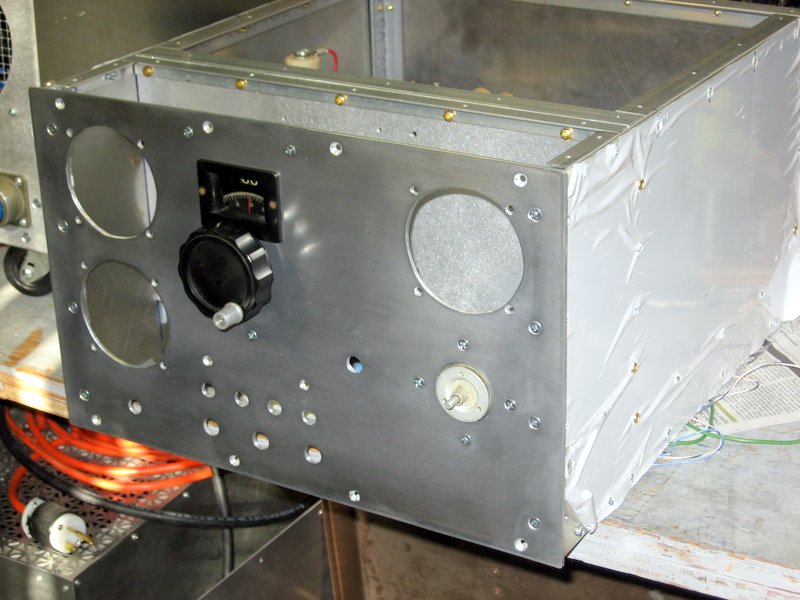
The large heatsink on the left is for the screen regulator MOSFET. Note that the top and bottom of the section between the panels will be perforated metal, so the components will be cooled by convection.
The 'missing' capacitors from the Tetrode Boards stack on the right have been relocated between the boards because some lid failed to pay close enough attention to clearance for the meter.
Screen and plate meters can be calibrated with the trimpots mounted on them. The other trimpots on the dial mechanism are for the HV and RF output meters.
The Tetrode Boards have been tested and adjusted. I lost a week by accidentallly switching two wires during testing, and burned out the transformer for the QSK circuit. Lots of dissassembly required to get to it.

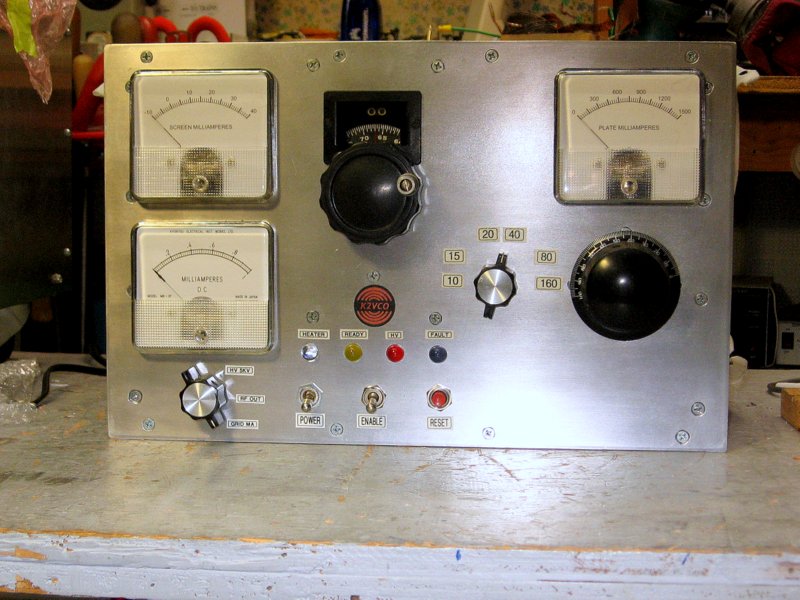
Results were excellent! 12 watts of drive produced more than 750 watts output. I should be able to get full legal power from 25 watts drive.
I still need to cut an exhaust hole in the top cover and fit a silicone rubber chimney to the tube; make a new meter scale for the multimeter (bottom left); and a few other things. Then I will tune it up with full drive on all bands.
You can see the dummy load sitting on top of the power supply near the wattmeter. I added two fans to handle this job!
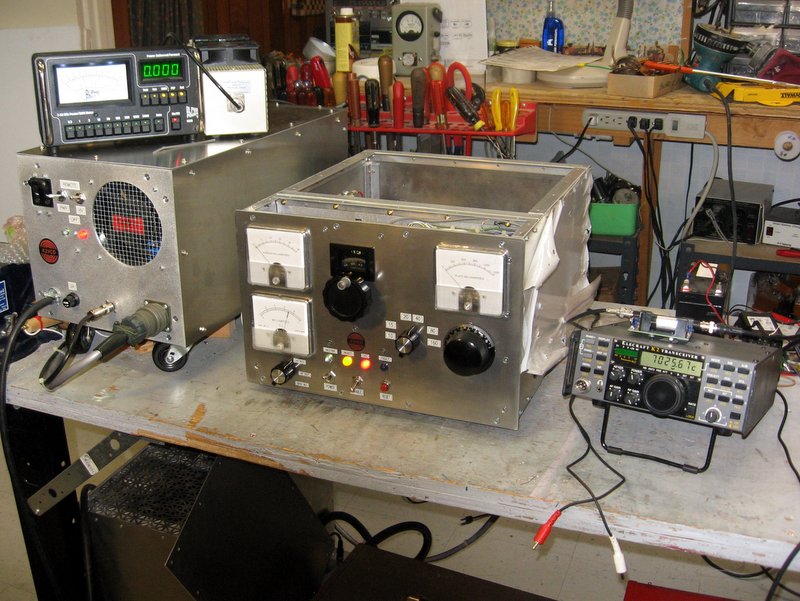
Well, sort of. It is producing in excess of the legal limit on 160 through 10 meters, but there are a few minor changes that I want to make, such as adding a circuit to slow the blower when the amplifier is in standby (and keep it running for a while after transmitting). But I think I will operate it for a while to flush out any problems or weak spots that I don't know about.
This has been a long project, more than two years of sporadic work. I made a lot of mistakes and had to go back and redo things several times. I might even redo the tank circuit yet again.
